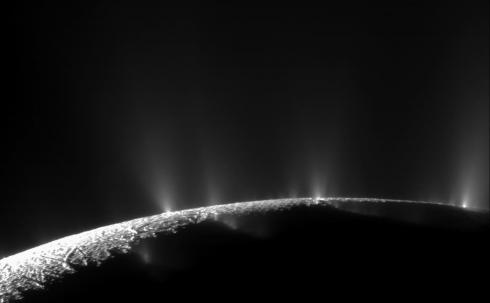
Smithsonian Scientists Take the Stage to Discuss Latest Research
Curious about the solar system, space junk, cosmology and other wonders of the universe? Visitors to the Smithsonian’s National Air and Space Museum can learn about these topics in a lecture series presented in partnership with the Harvard-Smithsonian Center for Astrophysics. “Smithsonian’s Stars” features the Institution’s scientists presenting their research and recent discoveries on everything from the curious population of icy bodies of the outer solar system to the most fundamental questions about the universe.
The “Smithsonian’s Stars” free public lectures will take place select Saturday evenings at 5:15 p.m. from November through February 2015, in the museum’s Albert Einstein Planetarium. Lectures are suitable for ages 13 and up and will be followed by sky observing in the museum’s Public Observatory at 6:30 p.m., weather permitting.
Scheduled Programs
Nov. 8: “Far Out! A Tour of the Icy Bodies of the Outer Solar System”
Emily Martin, postdoctoral earth and planetary sciences fellow, National Air and Space Museum’s Center for Earth and Planetary Studies
Dec. 6: “Rubble Trouble: How Space Junk Impacts Astronomy”
Lisa Ruth Rand, research associate, Department of Space History, National Air and Space Museum
Jan. 24: “Observing the Origin or the Universe from the South Pole”
Colin Bischoff, research associate, Harvard-Smithsonian Center for Astrophysics
Feb. 21: “Tracing the Structure of the Universe with Galaxy Surveys”
Cameron McBride, postdoctoral fellow, Harvard-Smithsonian Center for Astrophysics
More information on each lecture and free tickets are available at the lecture series’ website: Smithsonian’s Stars.
The National Air and Space Museum is on the National Mall in Washington, D.C., at Sixth Street and Independence Avenue S.W. The museum’s Steven F. Udvar-Hazy Center is located in Chantilly, Va., near Washington Dulles International Airport. Both facilities are open daily from 10 a.m. until 5:30 p.m. (closed Dec. 25). Admission is free, but there is a $15 fee for parking at the Udvar-Hazy Center.
# # #
Dramatic plumes, both large and small, spray water ice and vapor from many locations along the famed "tiger stripes" near the south pole of Saturn's moon Enceladus. The tiger stripes are four prominent, approximately 84-mile- (135-kilometer-) long fractures that cross the moon's south polar terrain.
This two-image mosaic is one of the highest resolution views acquired by Cassini during its imaging survey of the geyser basin capping the southern hemisphere of Saturn's moon Enceladus. It clearly shows the curvilinear arrangement of geysers, erupting from the fractures. From left to right, the fractures are Alexandria, Cairo, Baghdad, and Damascus.